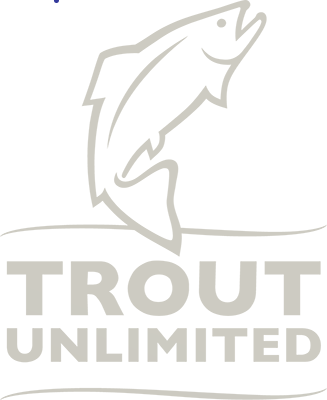
About Trout Unlimited
About Trout Unlimited
In 1959, 16 dedicated anglers gathered on the banks of Michigan’s Au Sable River. United by a love of fishing and a desire to help wild trout survive, they launched TU with successful campaigns championing catch-and- release fishing and the use of barbless hooks.
Today TU has thousands of volunteers working out of more than 400 chapters nationwide to conserve, protect and restore coldwater fisheries. They donate well over 500,000 hours every year to clean up polluted streams, restore water to dried-up rivers, and teach children about responsible stewardship and good fishing. A professional staff of more than 120 scientists, grassroots organizers, lawyers and policy experts provides a national context for these local efforts. They tackle legal and legislative challenges to the health of our nation’s rivers and help TU bring cutting-edge scientific tools, such as infra-red satellite imagery and sophisticated fish tracking devices, to bear on difficult problems like pollution, habitat loss and climate change.
From Vermont’s Battenkill to Alaska’s Bristol Bay, TU’s efforts have made a difference on more than 10,000 miles of river nationwide. We have won major victories in court and in Congress, using a non-partisan, action-oriented approach that has earned the support of state and federal agencies, universities, non-profits, landowners and hundreds of partners.
How Trout Unlimited works
There’s one fundamental truth about rivers: what happens upstream will eventually flow downstream. Everything is interconnected, so we must work effectively not only on local streams, but also on entire rivers and river systems.
To succeed, we rely on our combination of grassroots capacity and professional expertise. A simple yet effective framework integrates our efforts: protect pristine habitat, usually in the headwaters; then reconnect it to areas we restore downstream. Sustain this work over time by building a broad coalition of people committed to coldwater conservation.
On any given river, you might find TU policy experts advocating for legislation to protect pristine lands, while staff scientists collaborate with volunteers on the ground to clean up streams and replace culverts that block fish passage. Partnership projects with local schools complement these efforts, introducing a new generation to TU’s work.
Everyone tackles a different piece of the puzzle, but the end result is miles and miles of interconnected habitat for fish, and healthier, more fishable rivers for all of us. The scale of our work continues to expand, but our focus remains the protection of wild and native fish, and our greatest resource is still the energy and enthusiasm of America’s anglers.
Together, we are working to ensure that our favorite streams and rivers will still be there—cold, clean and fishable—for the next generation. To join us on a stream near you, visit www.tu.org or call (800) 834-2419.
